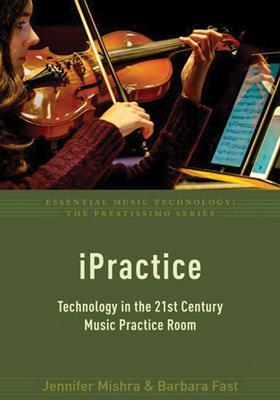Alex Laing reviews a practical guide to how music teachers and students can use the latest tech wizardry

iPractice: Technology in the 21st Century Music Practice Room
Jennifer Mishra, Barbara Fast
152PP ISBN 9780190660901
OUP £19.99
This book seeks to inspire students, teachers and performers alike to explore how technology can bring more variety and productivity into their practice. Written by Jennifer Mishra, a widely published string musician and educator, and Barbara Fast, professor of piano at the University of Oklahoma, it acknowledges that many successful practice methods exist and have been widely written about. The authors are not offering new methods, but show very clearly how technology can be used to freshen up existing ones.
Almost everyone has access to the necessary technology. A phone or tablet can record lessons, access videos and recordings, and provide instant answers to questions on technique or musicianship. There are apps or pieces of software that can help with any number of elements of practice. Moreover, existing technology is always improving. This book pointed out to me, for example, that there are apps like the ‘Amazing Slow Downer’, which allows a musician to play along with a tricky passage at a reduced speed while retaining the original pitch and allowing continuing understanding of the whole score. Notation software can be used to simplify the look of complicated scores. One can simply change time signatures, rewrite a demisemiquaver passage in quavers, or change accidentals enharmonically for easier visual understanding.
The strongest message in the book is about how social media could be an aid to music practice, which can be an isolated and isolating activity. Mishra and Fast espouse the use of blogging and vlogging, Skype or live-streaming. Using tools like this it is easy to get instant reactions to music making, to interact with an audience or teacher, to practise concerts, and even set up scenarios like auditions. An online practice diary or tracker can help us feel part of a sports training group or team, with our activities logged and improvements noted for all to appreciate.
There is an excellent companion website (www.oup.com/us/ipractice) which contains interviews with musicians (including members of the New York Philharmonic) and teachers, who discuss their favourite practice methods. There are also demonstrations of apps and software and colourful versions of the graphics that appear in the book.
Mishra and Fast are aware that technology moves on rapidly, and that apps and programs mentioned will be superseded. This book, however, is future-proof as its primary message is to open people’s minds to exploit, in a creative way, whatever technology is available. It has certainly shown me that practice diaries can be interactive and fun, allowing pupils to take more ownership of their own improvements.
ALEX LAING










































No comments yet